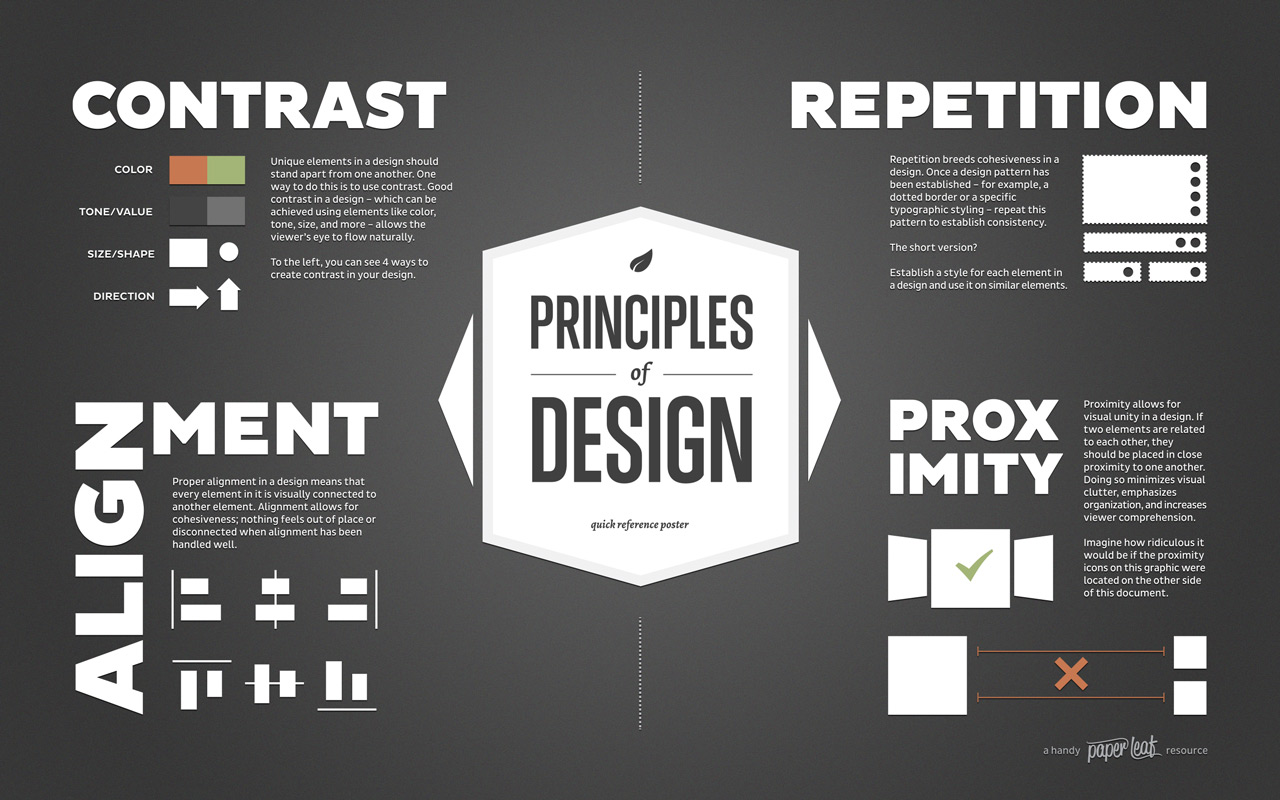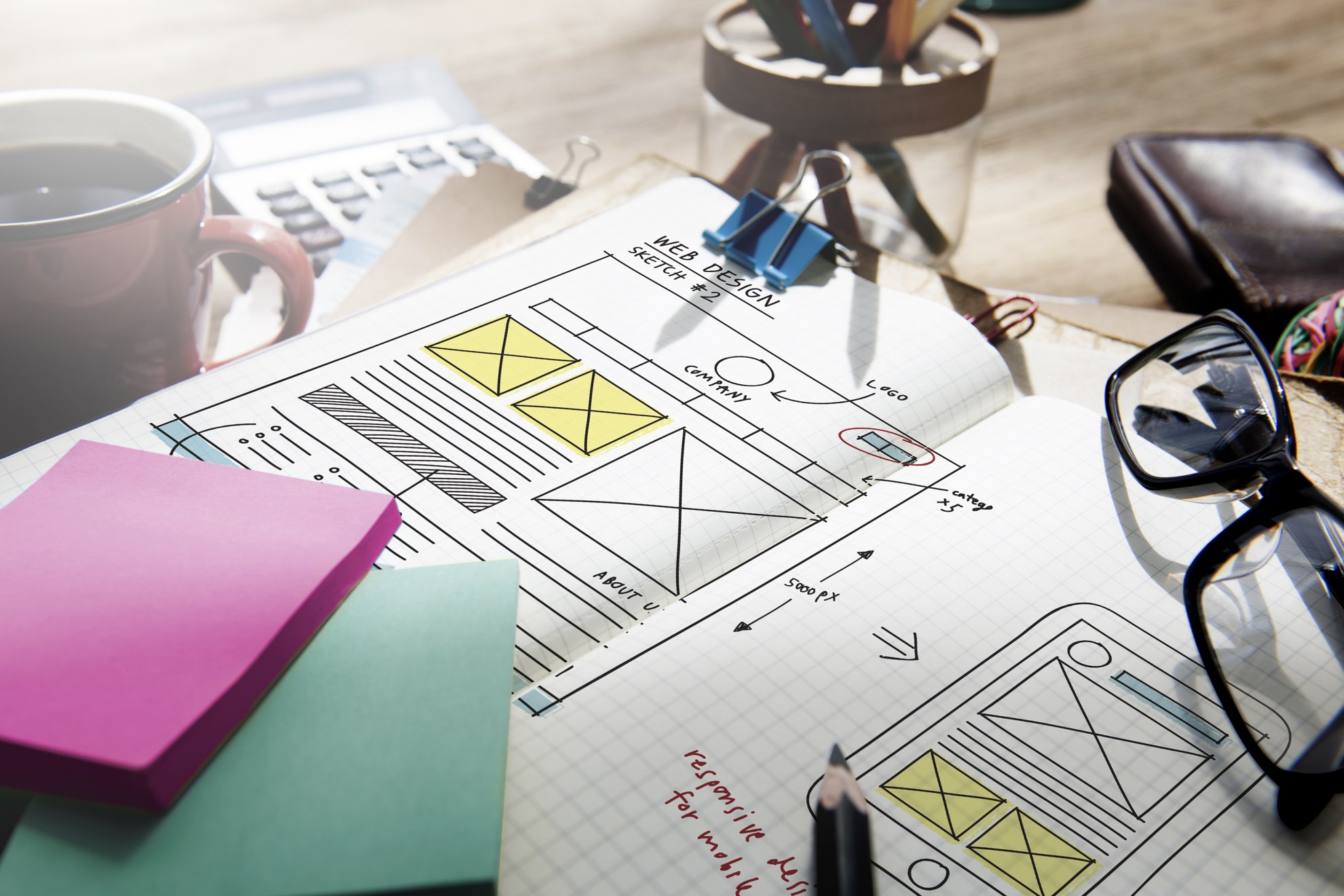Table Of Content

The principles are crucial because they help you create aesthetically appealing, attention-grabbing artwork. Proportion in design talks about how 2 elements relate to each other even after being different in size, color, and functionality. With the help of alignment, users know where to look, where to read, and how to interact. This can be seen in all designs whether websites or map outlines.
Gestalt principles of design: The 7 key ideas
Research shows that around 65% of the population are visual learners, meaning they process information best when presented visually. With this in mind, it becomes clear why incorporating visual design principles into eLearning or any instructional module is indispensable. The elements of design are the building blocks of visual art, including point, line, shape, and space.
How to apply the principles of design
Tiny sizes are often needed for mobile applications and data visualization labels. Be sure to test your fonts on the actual device types and platforms your users will be using to view the designs. They’re the tools that will help you create designs that are not just visually appealing but also functionally superior. So, use them, test them, and watch as your designs resonate with users on a whole new level. Gestalt principles are your toolkit for ensuring users get the ‘vibe’ of your design immediately. They help you organize content so that it’s not just a random collection of elements but a coherent unit that makes sense at a glance.
White Space
Remember that every little thing you add to composition has a particular weight. Color, size, and texture are all factors that account for weight. You can't stuff all your heavy elements into a specific area of your design, just like you wouldn't place all your plants in one corner of a garden. This feature is visualized by ensuring that an image has a focal point or center of interest. 'Design is all about squeezing out the brain's creative side, right? ' If you're a new entrepreneur or designer, you might be tempted to go all out and combine the first five typefaces and colors that strike your eye to produce something unique.
Ready to leave the Classroom now and Launch Your Exciting Career as a Professional Instructional Designer?
You can show variety through colors, shapes, images, different typefaces, and other design elements. UI designers need to balance familiar brand personality and assets with focusing users on their goals. Maybe it’s your headline, your killer product shot, or that can’t-miss call-to-action button.
Essential Elements and Principles of Design
Smart Design's Five Palatable Principles for Food Design - Core77.com
Smart Design's Five Palatable Principles for Food Design.
Posted: Wed, 23 Mar 2016 07:00:00 GMT [source]
Master the fundamental concepts of web design, including typography, color theory, visual design, and so much more. The principle of reification states that your brain fills in gaps in visual information to identify objects. You don't have to see the entirety of something to understand what it is – if a design only includes a nose, one eye, and the outline of a jaw, you can deduce that you’re looking at a face. You likely learned the principles of design in grade school art class. By using them in your composition you’ll create art pieces that are both creative and effective. However, you don’t have to force all of these principles onto your design.
Principle 2: Visual hierarchy
But emphasis is not just about making certain elements stand out. It is also about creating a visual hierarchy that leads the viewer through the design in a logical and intuitive manner. By strategically placing emphasis on key elements, designers can ensure that the viewer understands the intended message and navigates through the design effortlessly.
Without variety, a design can very quickly become monotonous, causing the user to lose interest. Variety can be created in a variety of ways, through color, typography, images, shapes, and virtually any other design element. Many beginning designers feel the need to pack every pixel with some type of “design” and overlook the value of white space. But white space serves many important purposes in a design, foremost being giving elements of the design room to breathe.
Variety should reinforce the other elements of a design and be used alongside them to create a more interesting and aesthetically pleasing outcome that improves the user’s experience. The most important element should lead to the next most important and so on. This is done through positioning (the eye naturally falls on certain areas of a design first), emphasis, and other design elements already mentioned. In design, however, patterns can also refer to set standards for how certain elements are designed. For example, top navigation is a design pattern that the majority of internet users have interacted with. This article, for example, uses repetition in the format of the headings.
When different pigments are mixed together, the mixture absorbs a wider range of light, resulting in a darker colour. A subtractive mix of cyan, magenta and yellow will result in a black colour. A subtractive mix of colours in paint and print produces the CMYK (i.e., Cyan, Magenta, Yellow and blacK) colour system. There are several Gestalt principles, including similarity, continuation, closure, proximity, common region, figure/ground, and symmetry and order. Proximity is especially important for UX — it refers to the fact that items that are visually closer together are perceived as part of the same group.
With the Gestalt principles in your design spellbook, you’re on your way to creating some real UX wizardry. Balance in design isn’t about making everything symmetrical, though that can be visually satisfying. It’s about arranging elements to give off a vibe of equilibrium through mirrored symmetry or an asymmetrical layout that still feels just right. It’s like a well-organized desk—there’s a place for everything, and everything’s in its place, giving you a sense of calm. When you play with the scale of different elements, you tell the user, “Hey, look here first!

(Because they often play out at the visceral level in Don Norman’s model of emotional design.) However, few can verbalize why a layout is visually attractive. Graphics that take advantage of the principles of good visual design can drive engagement and increase usability. In a basic definition, scale is the deliberate sizing of individual elements.
Such as for text define H1, H2 so on till H6 sizes to place in balance. Humans are complex creatures, they hear something which is louder enough and see something prominent or big/large enough in a channel full of chaos/noise. Size and scale aid in balancing out elements based on their relevance and importance. For example, large and bold text understood is important whereas small and lightweight text is not too emphasized.
Movement refers to the way a user’s eyes move across your composition. Dynamic designs encourage lots of eye movement, while static ones encourage less. The best designers can, to an extent, control which elements users focus on by placing them along the path of the most natural eye movement patterns. With the elements of visual design and design principles in mind, we will analyse a few websites to see how they come together, and why the designs work. The principles include contrast, balance, pattern, variety, and unity. These guidelines use elements to tell a story or atmosphere and help blend the elements effectively.

No comments:
Post a Comment